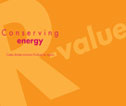American humorist Will Rogers offered an insightful observation about U.S. government when he declared: "The only difference between death and taxes is that death doesn't get worse every time Congress meets."
Although this may have rung true many times during the course of history, Congress has made some recent attempts to offer tax relief to the public, including passing several acts providing tax incentives for individuals and business owners who make energy-efficient improvements to their homes or businesses. One way to do so is by improving a building envelope, which often entails making improvements to the building's roof system. As a result, there are some roofing-related incentives of which taxpayers may want to take advantage.
Unfortunately, many homeowners and business owners don't clearly understand what needs to be done to obtain the tax credits; a primary reason for confusion is the requirements for homeowners and business owners differ.
Homeowners
The American Recovery and Reinvestment Act (ARRA) of 2009—also known as the stimulus bill—contains a provision that includes a Residential Energy Property Credit providing a federal tax credit to homeowners who make energy-efficient improvements to their existing homes. Improvements that apply include adding insulation and upgrading windows, doors, HVAC equipment, biomass stoves, non-solar water heaters and roof systems to specifically defined parameters.
One way a homeowner can obtain the tax credit is by installing an ENERGY STAR®-qualified roofing product. The ENERGY STAR Roof Products Program is a joint program of the Environmental Protection Agency (EPA) and Department of Energy (DOE) and is based on voluntary agreements between EPA and product manufacturers. By entering the program, a product manufacturer commits to developing specific products that meet EPA's energy-efficiency criteria. In return, EPA permits the manufacturer to place an ENERGY STAR label on its products that meet or exceed ENERGY STAR criteria.
Roofing products featuring the ENERGY STAR label have a minimum initial solar reflectance of 0.25 for steep-slope roof systems—slopes 2-in-12 (9 degrees) and greater—or 0.65 for low-slope roof systems—slopes less than 2-in-12 (9 degrees).
Many roofing products feature the ENERGY STAR label, but not all the labeled products qualify for the ARRA tax credit; the credit only applies to products on the ENERGY STAR-qualified product list that are metal roof systems with appropriate pigmented coatings or asphalt roof systems (asphalt shingles or polymer-modified bitumen) with appropriate cooling granules.
According to ENERGY STAR's Web site, www.energystar.gov, EPA will not confirm that all the products on the list are eligible for the tax credit. EPA recommends contacting manufacturers and asking for a Manufacturer Certification State-ment, a signed statement from the manufacturer certifying a product qualifies for the tax credit. In most cases, these certifications can be found on manufacturers' Web sites.
Because eligible roofing products are reflective roof systems, you might assume the application of a reflective roof coating would meet the criteria. Unfortunately, coatings alone are not included in the qualified product list. Homeowners should be made aware of this if you suggest applying roof coatings.
How much?
ARRA's tax credit is different from a deduction. A tax credit usually is considered more beneficial than a deduction because it reduces taxes dollar-for-dollar as opposed to a deduction that only reduces the percentage of tax owed.
A homeowner may take a tax credit of 30 percent of the material cost up to $1,500. Unfortunately, installation costs cannot be included. A new roof system must be installed on a homeowner's principal residence between Jan. 1, 2009, and Dec. 31, 2010. The tax credit is limited to $1,500 for 2009 and 2010 combined. If roofing material costs do not exceed $5,000, improvements relating to insulation, windows and doors, HVAC, biomass stoves and nonsolar water heaters can be included.
Additionally, the tax credit dollars cannot be carried from 2009 to 2010. However, a portion of the $1,500 can be claimed in 2009 and the rest in 2010 as long as the improvements are separate purchases.
For example, if a homeowner spent $4,500 for a new roof system in 2009, he or she would get a $1,350 tax credit for 2009 taxes. Then, if the homeowner spends $500 in 2010 on insulation for his or her attic, he or she still can apply for a $150 tax credit for 2010 taxes.
There is no upper or lower limit on income for getting the tax credit. And the tax credit is considered nonrefundable, which means at the end of the year, a homeowner can't get back more in credits than what he or she paid in taxes during the year. To apply for the tax credit, a homeowner needs to file Tax Form 5695 with his or her tax return.
Business owners
Tax incentives for business owners first were included in the Energy Policy Act (EPAct) of 2005. EPAct allowed tax deductions for energy-efficiency improvements to commercial buildings that meet ASHRAE 90.1-2001, "Energy Standard for Buildings Except Low-Rise Residential Buildings." The tax incentives included in EPAct were scheduled to expire in 2007 but were extended to 2013 by the Emergency Economic Stabilization Act (EESA) of 2008.
One major difference between the homeowner and business owner tax incentives is homeowners can get a tax credit and business owners can take a tax deduction. For business owners, EPAct and EESA allow a tax deduction up to $1.80 per square foot for new or renovated buildings meeting ASHRAE 90.1-01 that save at least 50 percent of their projected annual energy costs. Components that affect energy costs include lighting, heating, cooling, water heating and the building envelope.
If a whole building analysis does not meet the 50 percent target, a partial deduction up to 60 cents per square foot may be taken if there is a certain percentage of projected annual energy cost savings for one of three components: building envelope (at least 10 percent energy savings), lighting (at least 20 percent), or heating and cooling (at least 20 percent).
To qualify for the tax deduction, buildings must be located in the U.S. Also, an in-place building or system must be certified by a qualified individual through inspection (and testing, if applicable) to confirm the building or system meets the savings goals.
The qualified individual must perform calculations using approved computer software. DOE maintains a public list of software that can be used to determine energy and power consumption and costs for purposes of providing certification.
The software programs are fairly complex and most likely will require a professional who has expertise in energy calculation.
A qualified individual must be an engineer or contractor licensed in the jurisdiction where the building is located. The procedures should be performed according to the guidelines set forth by the Internal Revenue Service (IRS) in consultation with DOE. The qualified individual can illustrate compliance by using the American Society of Heating, Refrigerating and Air-Conditioning Engineers' (ASHRAE's) Interactive 90.1-2001 Compliance Forms (or equivalent forms).
IRS guidelines regarding certification and inspection are defined in IRS Notices 2006-52 and 2008-40 and are available at www.irs.gov.
How much?
Business owners often wonder whether they can get a tax deduction by adding more roof insulation or installing a white roof or coating. In most cases, these items alone will not reduce a building's overall energy cost 50 percent, so a business owner may not be able to take advantage of the maximum $1.60 per square foot deduction. However, there may be some situations in which adding roof insulation would reduce energy costs 10 percent, making the partial deduction of 60 cents per square foot available.
The person or company that pays for the construction costs is eligible to take the deduction. In many cases, this is the building owner, but for some projects, it may be a tenant. For government-owned buildings, it is possible for the principal designer to take the deduction. The building or system has to be placed in service between Jan. 1, 2006, and Dec. 31, 2013.
There is no specific IRS form for claiming the tax deduction. The deduction can be listed on the "Other deductions" line of the appropriate business tax form. A statement that lists the types and amounts of the other deductions should be attached to the return.
Although certifications and calculations do not need to be included with the tax return, the IRS advises taxpayers to keep all documents on file for recordkeeping purposes.
Every little bit
This is a brief summary of the possible roofing-related tax incentives available when installing energy-efficient roofing materials. However, you also should be aware that ARRA, EPAct and EESA offer a host of tax incentives for renewable energy systems. For example, homeowners can get tax credits for installing solar water heaters, wind turbines or geothermal heat pumps.
I strongly encourage you to contact the IRS and tax professionals for further information regarding available tax incentives. In these tough economic times, every little bit helps.
Joan P. Crowe, AIA, is an NRCA director of technical services.
State and local incentives
In addition to federal tax incentives, there also may be state and local incentives or utility rebates available.
The Database of State Incentives for Renewables and Efficiency (DSIRE) is a comprehensive source of information regarding state, local, utility, and federal incentives and policies that promote renewable energy and energy efficiency. DSIRE was established in 1995, is funded by the Department of Energy, and is an ongoing project of the North Carolina Solar Center and Interstate Renewable Energy Council. The database can be accessed at www.dsireusa.org.
The American Council for an Energy-Efficient Economy (ACEEE) also maintains a database of state policies at aceee.org/energy/state. ACEEE was founded in 1980 and is dedicated to advancing energy efficiency as a means of promoting economic prosperity, energy security and environmental protection.



